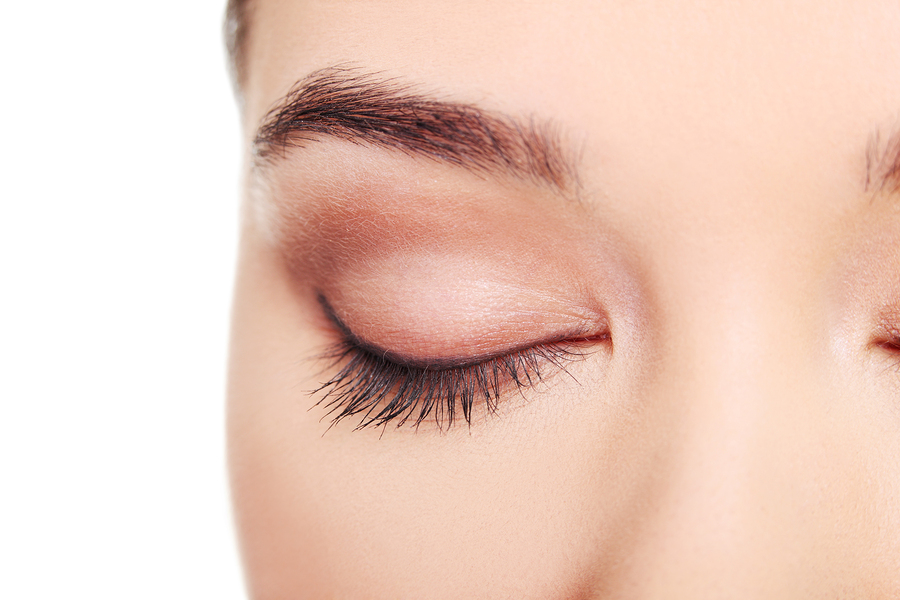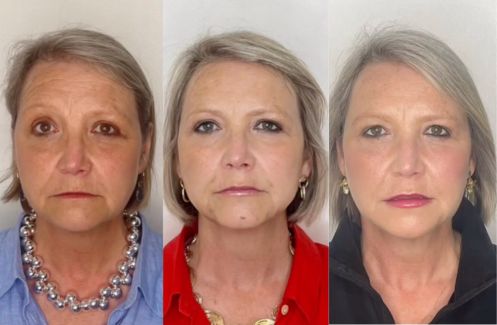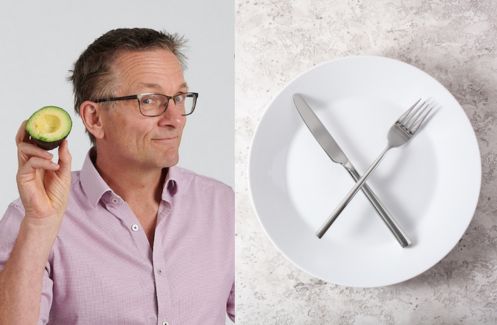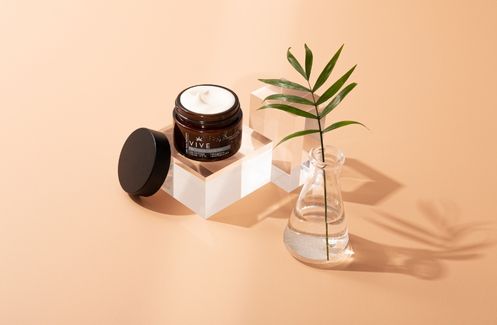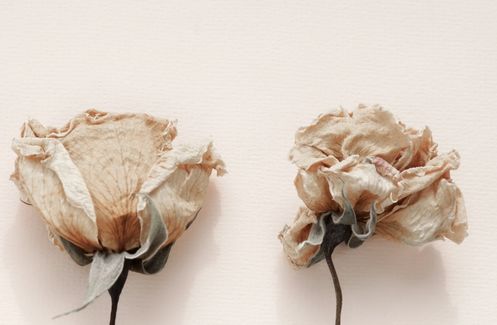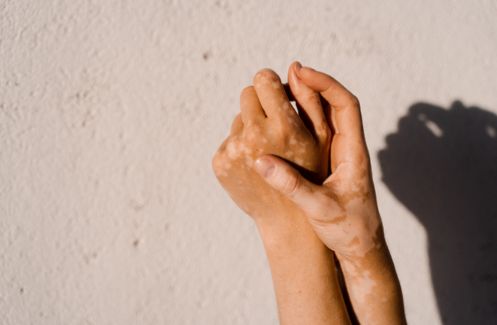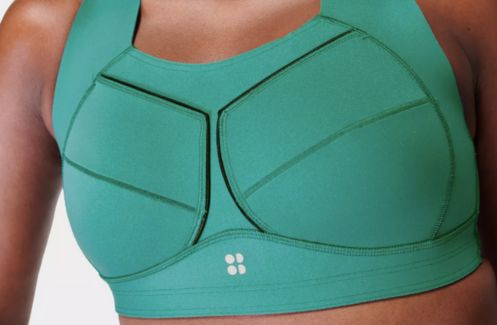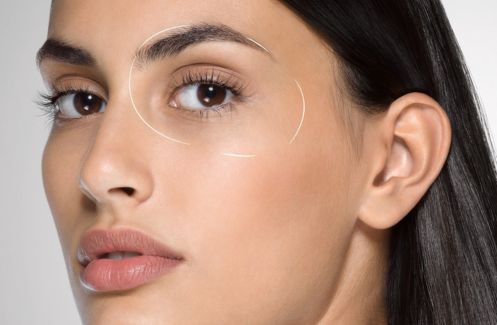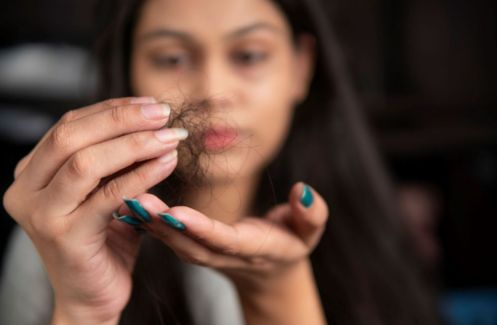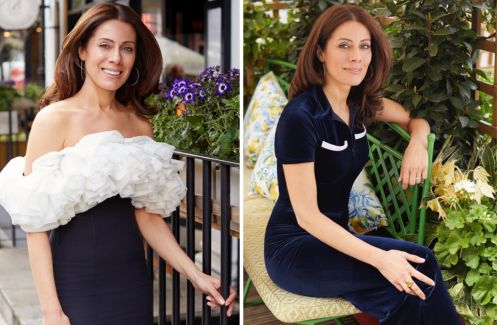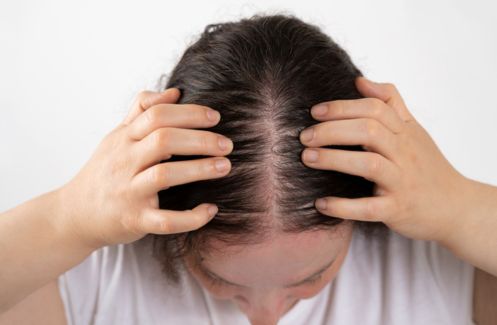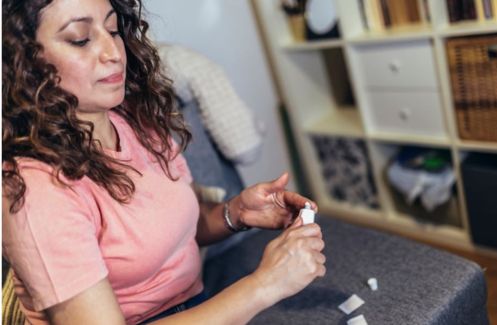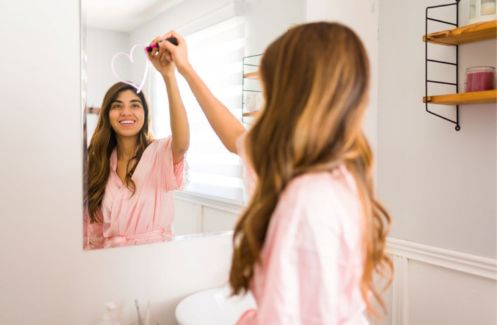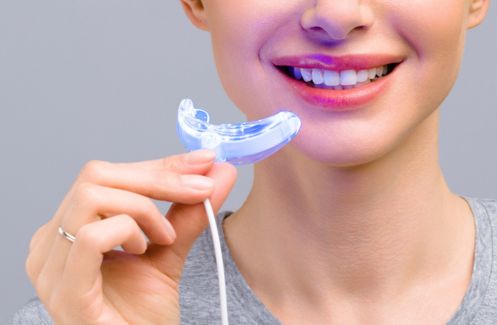Rita Khorramrooz, 27, a housing advisor from North London, is engaged to be married this November. She tells Healthista about one major bride-to-be adjustment she made—an eyebrow transplant to fix damage done almost 15 years ago.
We all know what it’s like to idolize celebrities. Their airbrushed faces on magazine covers, their bodies in music videos, their dresses on the red carpet. For me, it was all about the eyebrows. Jennifer Lopez’s, specifically. When I was 13 or 14, all the girls in school wanted their face framed like hers, including me. I started plucking my brows to get her high arch, even shaving the tails to achieve the celebrity-esque look I so badly wanted. I wish someone had told me that a trend I followed in high school would haunt me far past J. Lo’s prime.
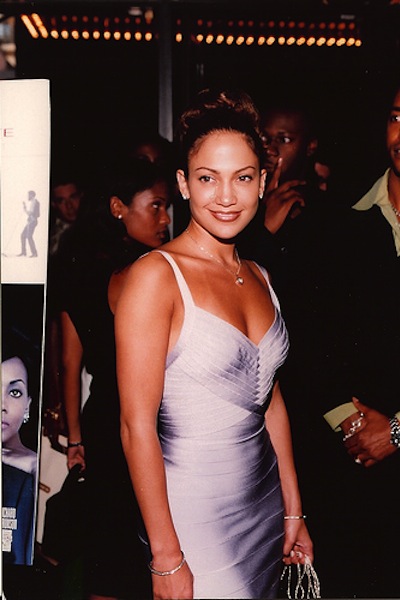
By the time I was 19, my eyebrow hairs were falling out. It didn’t concern me at the time—I thought it was temporary. I simply filled in the sparseness with eye pencil and went about my day. But after a while, I got tired of standing in front of a mirror to do my brows. As my frustration grew when the tails didn’t grow back, so did my embarrassment. I started to obsess over my eyebrows—were they even? Had the pencil smudged? I dreamed of having naturally thick eyebrows, or at least the average ones I’d had before I started plucking and shaving them.
My eyebrow obsession grew extreme as time wore on. I wouldn’t go swimming in fear of my eyebrow makeup washing off. I was reluctant to open the door if I hadn’t done them yet. At parties, I would always carry a small compact mirror to check my eyebrows every so often.
One of the things I’m most ashamed of is that if there was somebody else in the house, every time I would take a shower, I would bring my eyebrow pencil with me and do them before I came out, nervous that someone would see me with my real eyebrows, which by then were far more sparse than anyone’s eyebrows should be. Even if I didn’t have any other makeup on, I would not be caught without my eyebrows.
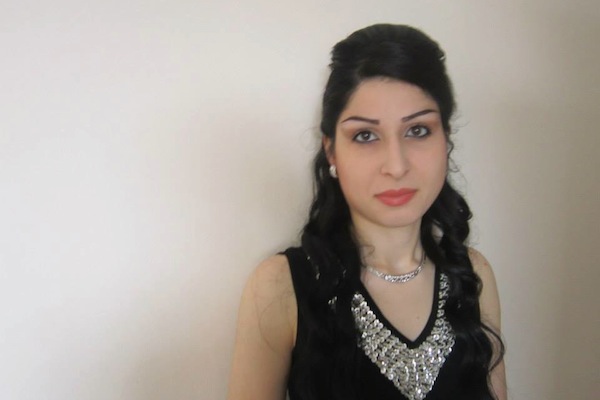
I tried everything to grow them back. Creams, oils, tablets, you name it. I would even order certain products from my native Iran to help. Nothing worked. I even tried getting an expensive facial once. When I looked in the mirror after it was over, I was horrified. Not only had it not helped, but my eyebrow makeup had come off during the treatment, and I felt far from relaxed. My attempts to grow back my eyebrows did exactly what I’d feared—nothing.
During my research, I came across the eyebrow transplant option. My dad had undergone a hair transplant, so I knew a bit about the procedure, but I had no idea it could be applied to eyebrows. I went to a clinic for a free consultation, and the doctor determined that I was the perfect candidate.
Financially, though, the procedure wasn’t in the cards at that point—it can cost anywhere between £2,500 and £5,000. Even though it wasn’t in the budget, I was thrilled to know that there was hope for my lost eyebrows. Since I was still single, I didn’t feel the pressure to do it right away, because there wasn’t a man around to see my real brows. I put it on the backburner, hoping someday I’d be able to pursue the option.

I’ve known my fiancé, Hessam, for as long as I remember; he’s a family friend. About a year and a half ago, our friendship turned into a serious relationship. He lives in Canada, so we communicated largely through video calling. Of course, I always had my eyebrows done when we spoke on skype. When we got engaged about six months ago, I knew I had to come clean. He had had no idea—he’d only ever seen me with my eyebrows perfectly applied. What he said still sticks with me: ‘I want to marry you, not your eyebrows.’
Even though he was so supportive I knew I had to do something for me and my own confidence. When I thought about my wedding day, and spending every day living with my husband after that, I decided to revisit the eyebrow transplant option.
I found Vinci Hair Clinic and had a consultation with Dr. Nikolas Zakynthinakis Kyriakou. Like the other doctor, he looked at me and almost immediately knew that this procedure was a good option. I have strong hair, and lots of it, so they took it from the back of my scalp. As it turns out, I hadn’t been doing myself any favors with my beloved eyebrow pencil—it only aided the hair loss because of the chemicals in the makeup.
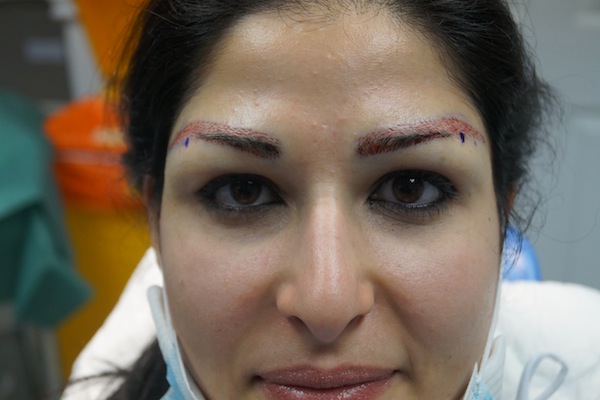
The procedure usually takes between two and three hours, but I volunteered to have it filmed for a Channel 5 documentary, Botched Up Brides. My procedure took from about 9 a.m. to 6 p.m. with breaks and other filming necessities. Doctors took a small strip of tissue from my scalp, dissected it into individual hair follicles, and then gently threaded the hairs into my eyebrows. The only pain was when they injected the local anesthetic in the back of my head and my eyebrows. Since they were filming it, they had to inject more anesthetic halfway through. For the first couple of nights, it was a bit uncomfortable trying to sleep with the stitches on the back of my head, but that’s to be expected with any minor surgery. It did feel uncomfortable for me for the first two months or so—even though you couldn’t see a difference, when I felt the back of my head it didn’t feel quite normal.
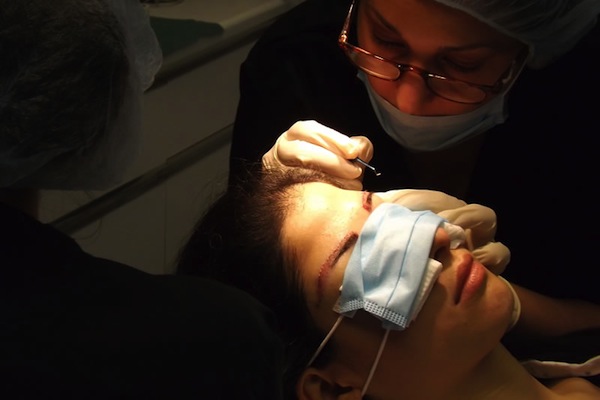
I had the surgery done on November 1, 2013. After about a month, the eyebrow hairs began to fall out and begin re-growth. Though I couldn’t let my eyebrow makeup come anywhere near them for the first month so they could heal without disruption, I ‘m allowed to gently use eyeshadow to fill them in while I’m waiting for them to be completely done. It wasn’t too bad having to stay away from them for the first month—the eyebrows from the transplant hadn’t fallen out yet so they looked just the way I wanted them to. It’s been about five months since the surgery, and I am really happy with the way they’re coming in. It takes about six months on average to see results, and they should be fully filled out within a year.
Hessam and I are getting married this November or December this year, in time for my eyebrows to fully fill out. It’s been a long time coming, and I could not be more excited to be the bushy-browed bride I’ve been waiting so long to be.
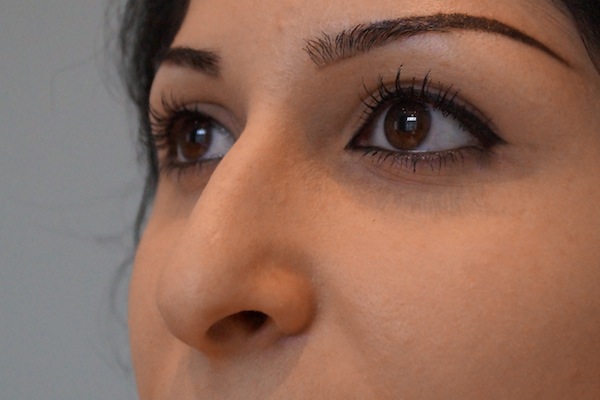
7 THINGS YOU NEED TO KNOW ABOUT EYEBROW TRANSPLANTS
By Dr. Salvar Bjornsson, senior consultant at vincihairclinic.com.
1. The degree of eyebrow transplants can vary. ‘You can correct anything from small flaws in the eyebrows to complete reconstruction when there is nothing at all,’ said Dr. Bjornsson.
2. If you’ve got curly hair, this might not be the best option, because ‘you wouldn’t want to have curly eyebrows,’ said Dr. Bjornsson. Since the hair follicles are usually taken from the back of your head, the texture of your eyebrows will match your hair. Anyone that is prone to keloid scarring or doesn’t heal well should also consider alternative options. Most people don’t have any scarring, though.
3. There are two harvesting methods, FUT (what Rita opted for) and FUE. ‘The only difference between the two is how you extract the hair from the donor area,’ according to Dr. Bjornsson. ‘The FUE uses a small circular punch for the extraction where follicles are extracted one by one. The big advantage of this method is that it leaves no linear scar but some shaving might be required. The FUT harvesting is done by extracting a small strip of skin from the back. this surgery can leave a small linear scar but this will be hidden completely under the existing hair.’ You can also take hair from the body using the FUE technique. However, a scalp donor area is preferable.
4. This is a low-risk procedure. It uses local anesthesia, which is generally very safe. However, swelling around the donor area and eyebrows can occur due to the trauma, and numbness in the donor area is possible after the surgery because of nerve damage, according to Dr. Bjornsson. Also, some people who experience less growth may come back in for a second surgery to fill in the gaps. Though this is not common, each person is different.
5. Eyebrow transplants have increased over the past few years. ‘In the past, women wanted very thin eyebrows, so you didn’t see many people coming in,’ said Dr. Bjornsson. With the rise of the bushy brow movement, though, visits to hair clinics for eyebrow transplants have increased. Dr. Bjornsson estimates the Vinci clinic is doing about 5 times the number of eyebrow transplants now than they did four years ago, and says that a single clinic will likely do about 6-8 eyebrow transplants per month.
6. You’ll have to trim them at least for the first few years, since the hair follicles come from the back of your head. As time goes on, though, you’ll have to trim them less and less, and after about two to three years you probably won’t have to do it at all.
7. You should see full results in about a year. For the first month of the procedure, the hairs transplanted will stay in. After about a month, the hairs will begin to fall out and regrowth will start. Most people are happy with their brows around the six month mark, but it takes about a year for the full growth.
If you’re thinking about an eyebrow transplant, visit vincihairclinic.com.
Rita’s story will be told on Botched Up Brides on Channel 5. It airs on Thursday, March 20, at 10 p.m.
Would you consider getting an eyebrow transplant?
Like this article? Sign up to our newsletter to get more articles like this delivered straight to your inbox.



